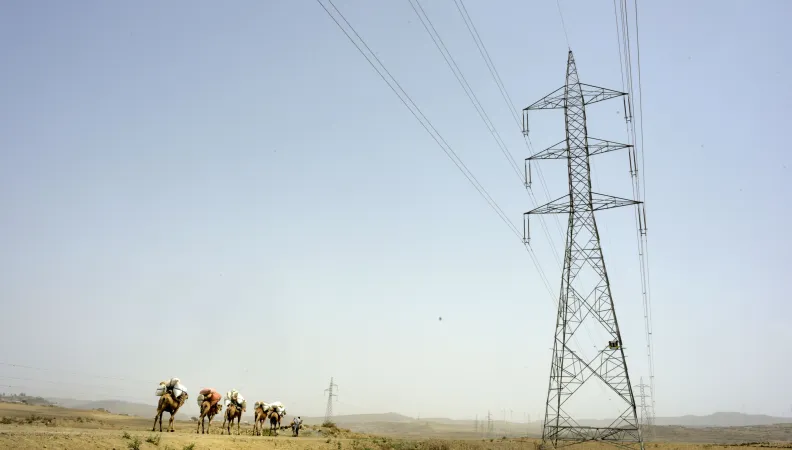Share the page
Construction of the new National Load Dispatch Center
Project


-
Project start date
-
-
AFD financing amount
-
€ 40000000
-
Country and region
-
Location
-
Ethiopia
-
Type of financing
-
Beneficiaries
-
Ethiopian Electric Power
Facing network instability, high consumption and generation growth, the national electricity utility Ethiopian Electric Power (EEP) decided to build a new load dispatch center in order to better manage the transmission network of the country – in accordance to the government’s electricity export strategy. This dispatch center is entirely financed by AFD.
Context
The electric network of a country has to be properly controlled and managed in order to balance power generation with power consumption to keep the network’s
stability.
The Load Dispatch Center (LDC) runs the consumption forecasts, controls the generation accordingly and the electricity flow from one producing area to a consumption area (including when exporting electricity to neighboring countries) and — if needed — decide of the areas where rolling blackouts will happen.
In Ethiopia, the Ethiopian Electric power (EEP) is executing many projects in consideration of demand for electricity to enhance its capacity in line with the growth of the country. The electricity demand has doubled for the past 10 years and is expected to increase by 28% – 32% per year in the next five years. The plan for GTP II is to reach the capacity of power generation 17.3 GW (up to about 5 GW in 2016) and 21,728 km of transmission lines by 2020.
Description
The existing LDC system cannot deal with the challenges that the sector has to face in the coming years in terms of sizing, performance, functionality and maintainability. Commissioned eight years ago, it was in fact conceived 13 years ago based on a power system of a small size (which has increased more than fivefold in generation capacity since then).
As a result, newly built power plants in Ethiopia (dams, windfarms…) cannot be linked to the current dispatch center and cannot be controlled as smoothly as if they
were fully integrated. The need of a new LDC is not questionable at this stage, as it will improve the automation level in operation for enhancing reliability, stability, security and quality of the power system.
This National Load Dispatch Center Project (NLDCP) is part of the National Grid Infrastructure Development Project (NGIDP) which also comprises the upgrading of
substations and the improvement of the transmission network.
Impacts
• Reduction in technical losses: proper control and management of power plants and substations,
• Reduction in energy not served: reduced losses on account of faster restoration in case of outages,
• Reduction of commercial losses: thievery of energy,
• Better integration of intermittent renewable energy sources: wind, solar…,
• Reduction in maintenance cost,
• Prediction of maintenance,
• Better asset management,
• Efficient controlling of tielines: for interconnection with neighboring countries,
• Improvement of the quality of electricity delivered,
• Improvement of staff capacity.


